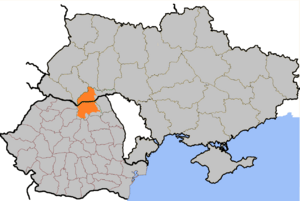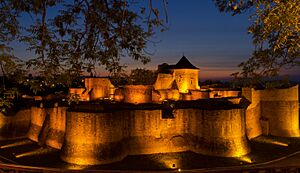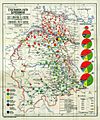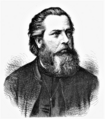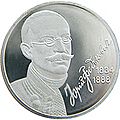Bukovina facts for kids
Bukovina is a special historical area found in both Romania and Ukraine. It is located near the northeastern Carpathian Mountains. This region has a rich history and unique culture, shaped by many different groups of people over hundreds of years.
Contents
What is Bukovina?
Bukovina means "land of beech trees." It is a beautiful region with mountains, forests, and rivers. For a long time, it was part of different kingdoms and empires. This history has made Bukovina a place where many cultures meet.
Where is Bukovina Today?
Today, Bukovina is split between two countries:
- Northern Bukovina is part of Ukraine. Its main city is Chernivtsi.
- Southern Bukovina is part of Romania. Its main city is Suceava.
A Quick Look at History
Bukovina has a long and interesting past. It was once part of a larger region called Moldavia. Later, it became part of the Austrian Empire. This changed the region a lot.
Early History
In ancient times, different tribes lived in the area. Later, it became part of the Principality of Moldavia. This was a powerful state that existed for many centuries. Suceava, a city in Southern Bukovina, was even the capital of Moldavia for a while.
Under Austrian Rule (1775-1918)
In 1775, the Austrian Empire took control of Bukovina. This was a big change. The Austrians made Bukovina a separate region within their empire. They built new roads, schools, and cities. Many people from different backgrounds moved to Bukovina, including Germans, Poles, and Jews. This made the region very diverse.
Life in Austrian Bukovina
During this time, Bukovina became known for its mix of cultures. People spoke many languages, like Romanian, Ukrainian, German, and Yiddish. Chernivtsi, the main city, grew into an important center for culture and education. It was sometimes called "Little Vienna" because of its beautiful buildings and lively atmosphere.
After World War I
After World War I ended in 1918, the Austrian Empire broke apart. Bukovina then joined Romania. This brought many changes to the region.
World War II and Beyond
During World War II, Bukovina was divided. Northern Bukovina became part of the Soviet Union (which is now Ukraine). Southern Bukovina remained part of Romania. This division continues to this day.
Culture and People
Bukovina is famous for its rich culture. It has beautiful monasteries, traditional villages, and a mix of customs.
Languages and Traditions
Because of its history, people in Bukovina speak different languages. In the north, Ukrainian is common. In the south, Romanian is spoken. Both parts of Bukovina have unique folk traditions, music, and clothing.
Famous Monasteries
Southern Bukovina is home to several famous painted monasteries. These churches have amazing frescoes (paintings) on their outside walls. They are so special that some are even listed as UNESCO World Heritage sites. The Voroneț Monastery is one of the most well-known.
Important Cities
The two main cities in Bukovina are Chernivtsi and Suceava.
Chernivtsi
Chernivtsi is the largest city in Northern Bukovina. It was a very important cultural and educational center during Austrian rule. The city has beautiful architecture, including the famous Residence of Bukovinian and Dalmatian Metropolitans, which is now a university and a UNESCO site.
Suceava
Suceava is the main city in Southern Bukovina. It has a long history as a capital of Moldavia. You can still see the ruins of its medieval fortress, the Seat Fortress of Suceava. The city is also a gateway to the famous painted monasteries.
Images for kids
-
Map of Austria-Hungary depicting the Duchy of Bukovina, as part of Cisleithania in 1914.
-
Bukovina within the historical region of Moldavia over the passing of time.
-
Monument in Iași (1875) dedicated to Grigore III Ghica and Moldavia's loss of Bukovina.
-
Petro Mohyla, influential Orthodox theologian and reformer
-
Church of Saint George (1374), Suceava
-
Ukrainian Cossack Tymofiy Khmelnytsky died in Suceava in 1653, while fighting a coalition of Poland, Transylvania, and Wallachia
-
Voroneț Monastery, UNESCO World Heritage site
-
Bust of Taras Shevchenko in Negostina
-
Palace of Justice, Suceava
-
Ciprian Porumbescu, famous Romanian composer, author of Pe-al nostru steag e scris Unire, song from which derived Himni i Flamurit, anthem of Albania
-
Zamfir Ralli-Arbore Romanian political activist, historian, geographer and ethnographer.
See also
 In Spanish: Bucovina para niños
In Spanish: Bucovina para niños


